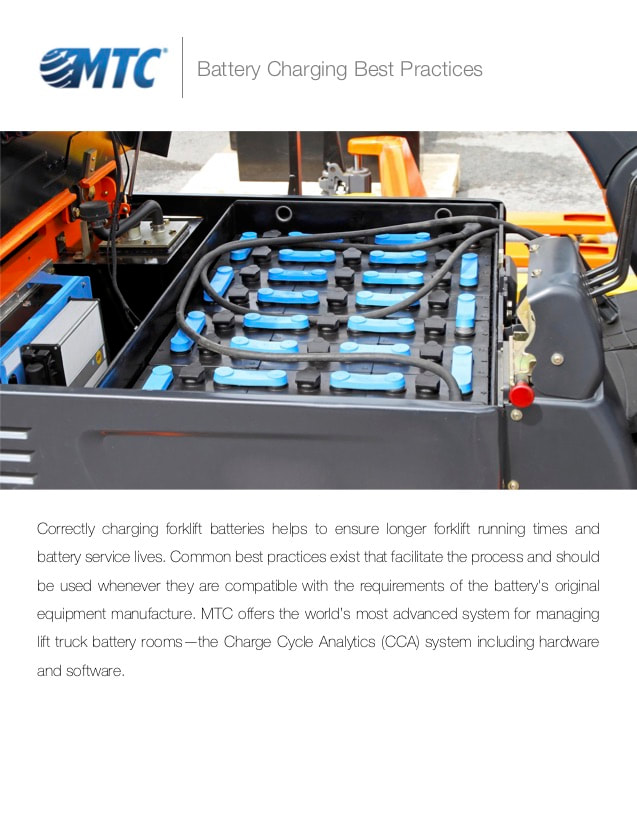
Battery Charging Best Practices Guide
Get a copy of the best practices information on this page as a single PDF document that makes saving, printing, and sharing this information very convenient.
download as a pdf file
Get a copy of the best practices information on this page as a single PDF document that makes saving, printing, and sharing this information very convenient.
download as a pdf fileThe charging of forklift batteries can expose personnel to potential hazards including electricity from batteries and chargers, an electrolyte containing sulfuric acid, and highly explosive hydrogen gas. Therefore, persons performing charging procedures should be appropriately trained and follow all of the requirements and recommendations of the forklift’s, battery’s, and charger’s original equipment manufacturer (OEM).
WARNING: Persons are required to wear personal protective equipment (PPE) whenever workplace hazards exist including those related to forklifts and their batteries. Consult OSHA and other applicable regulations to determine and conform to PPE requirements before performing forklift battery charging.
Best practices for personnel safety during battery charging include but are not limited to the following:
The best results will be obtained when closely adhering to a standard operating procedure (SOP) during forklift battery charging. In the event a documented SOP is not available, consult with the original equipment manufacturers of the forklift, battery, and charger for instructions. Consistently following a protocol can help to maximize the number of charging cycles supported before batteries require maintenance, service, and replacement.
Best practices for forklift battery charging include but are not limited to the following: